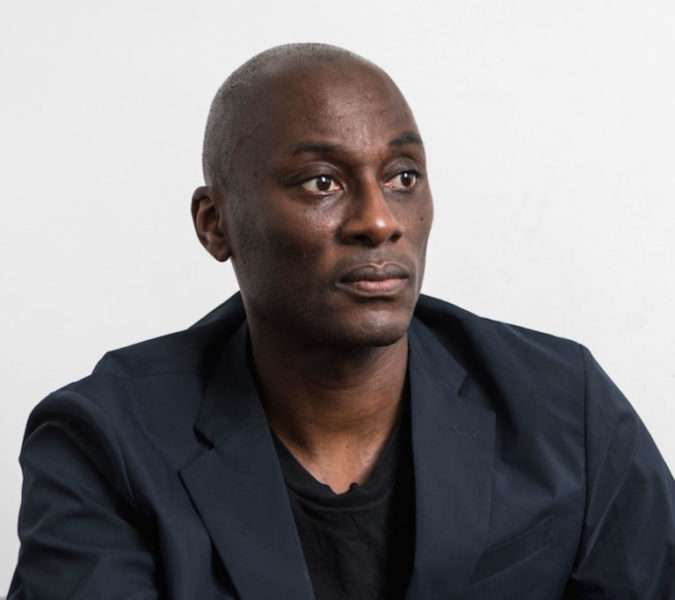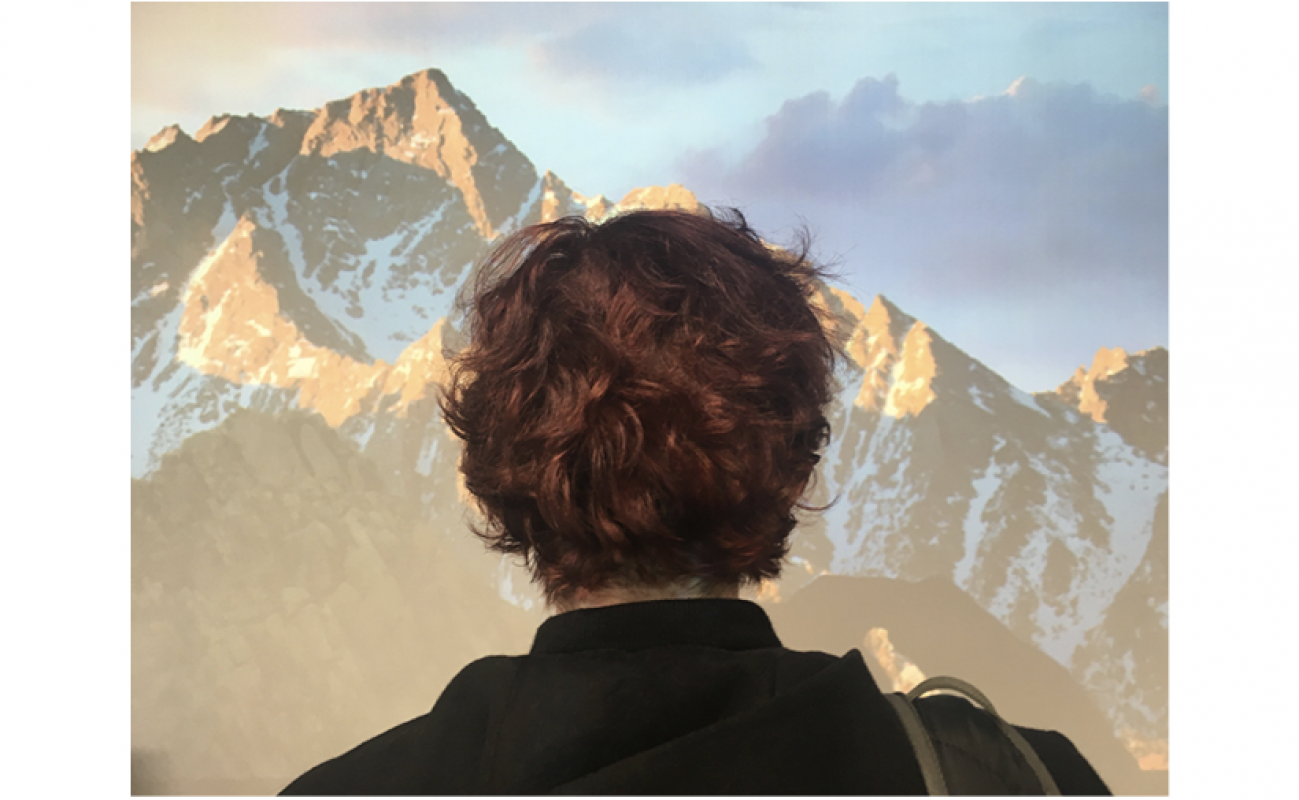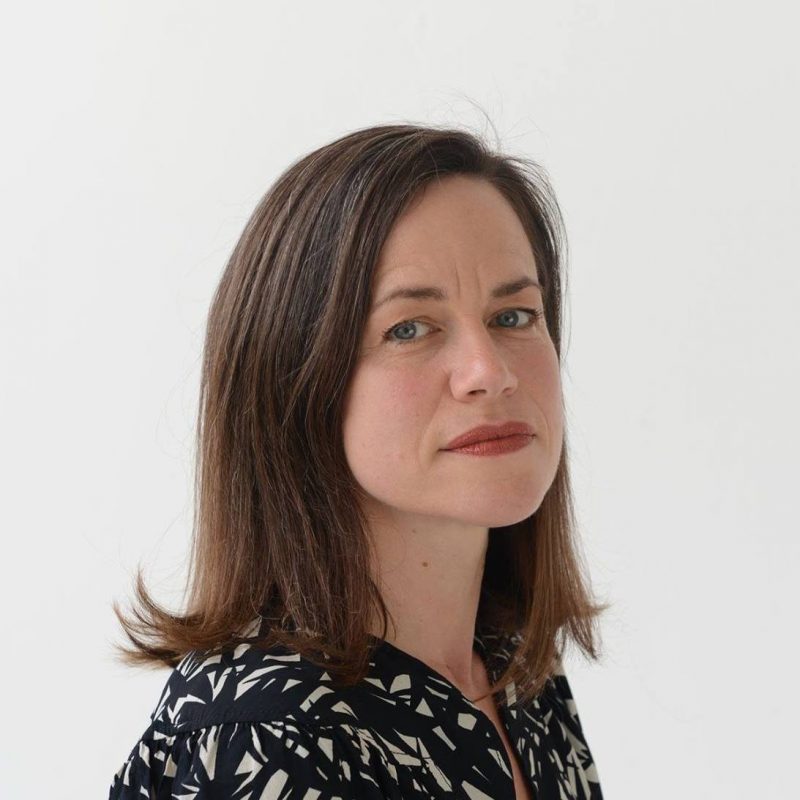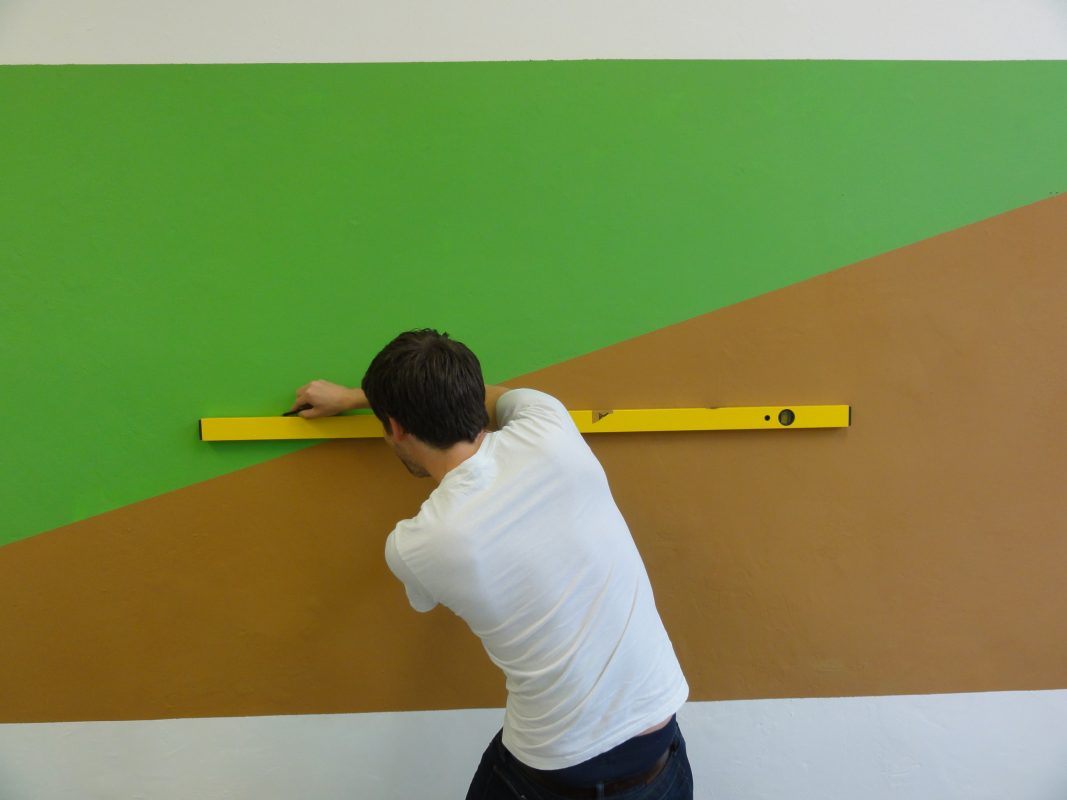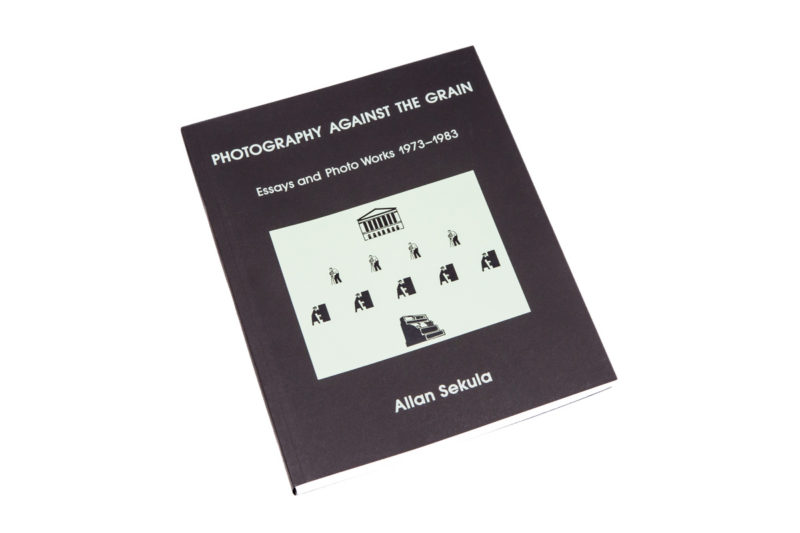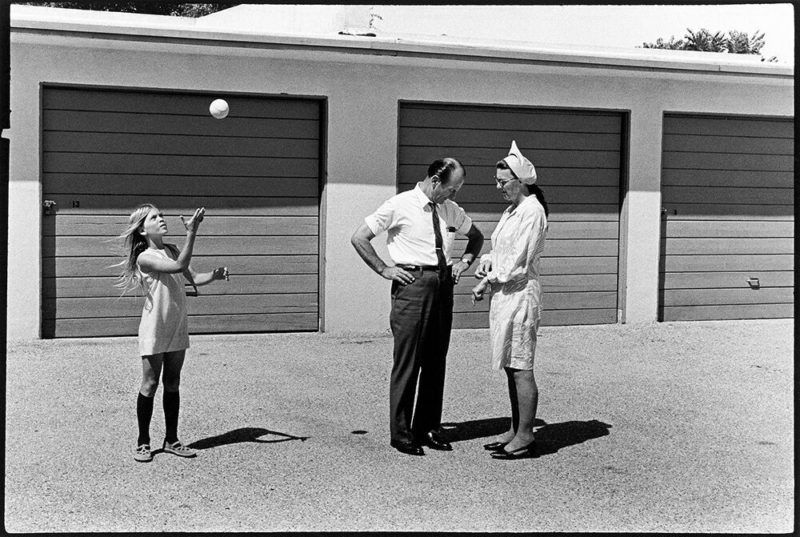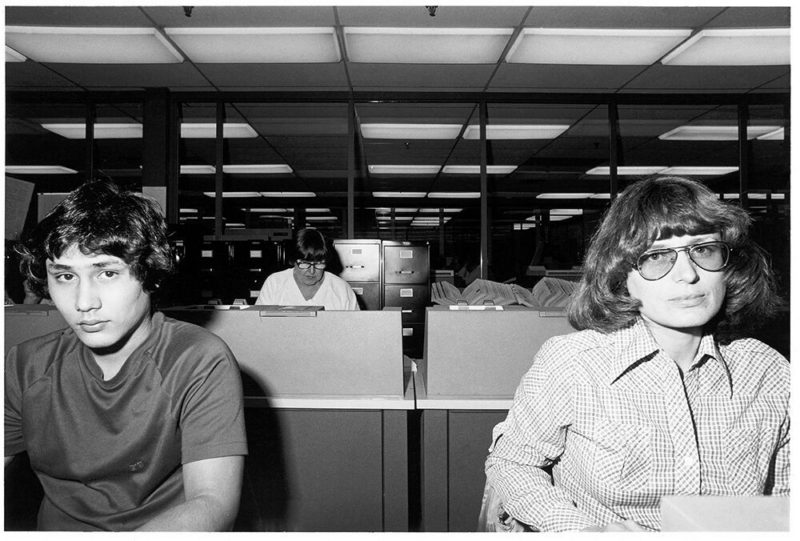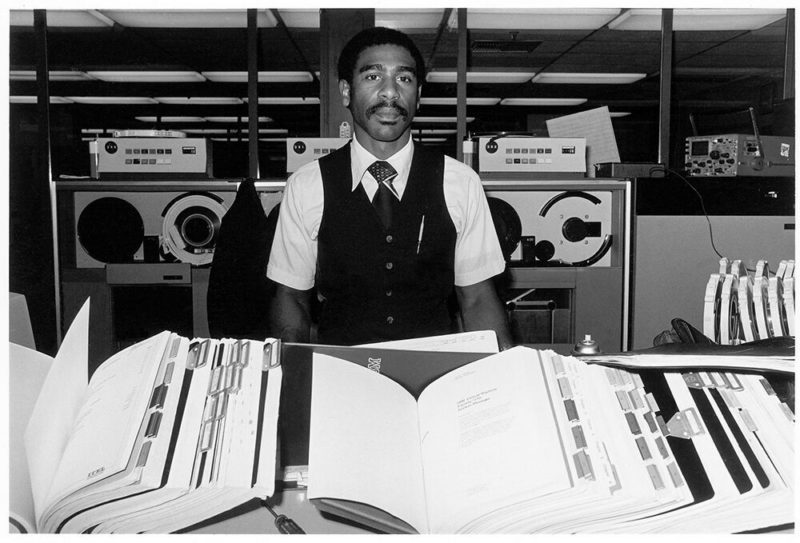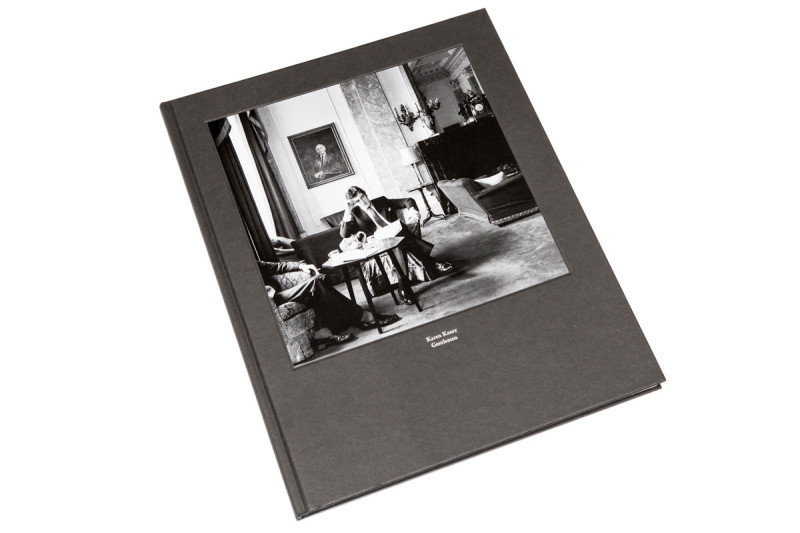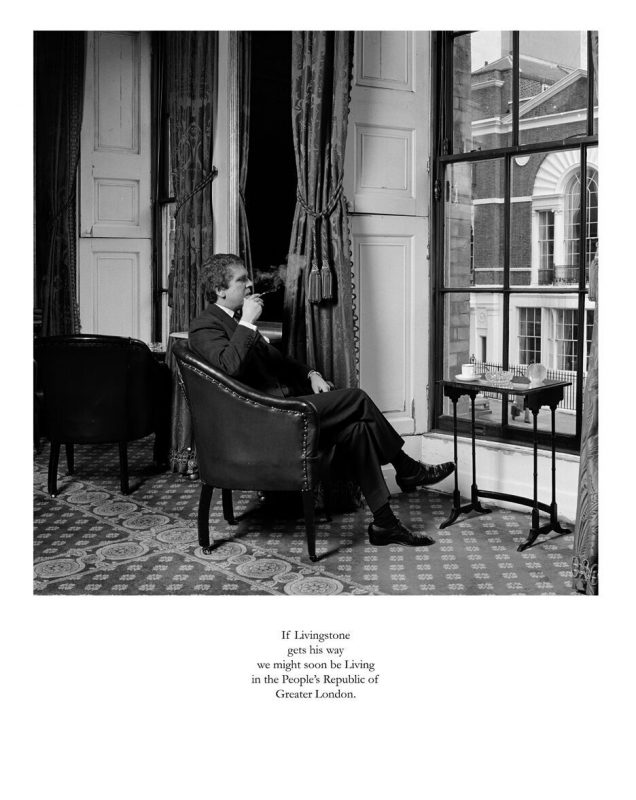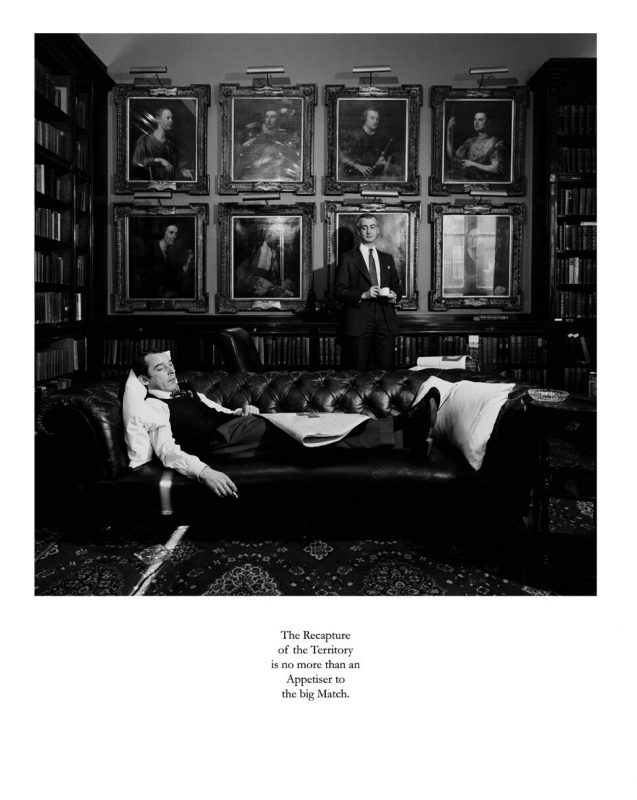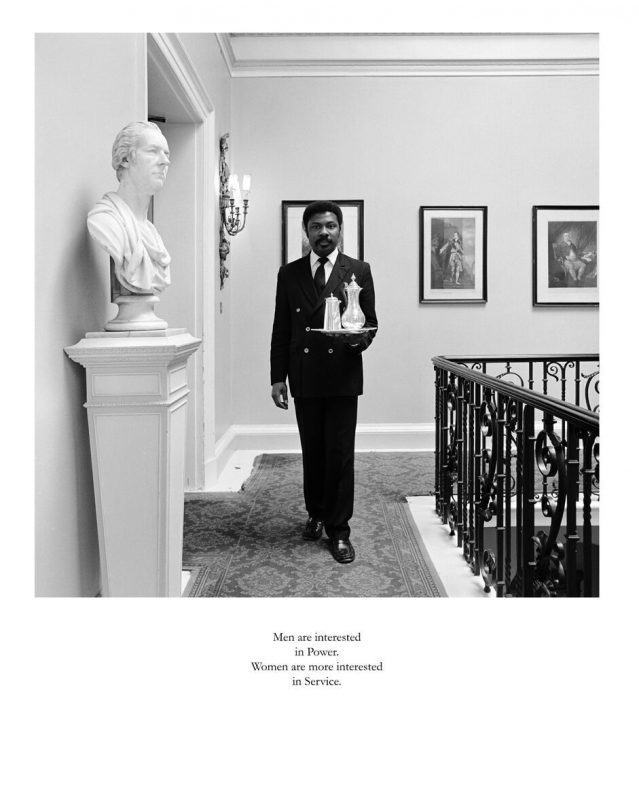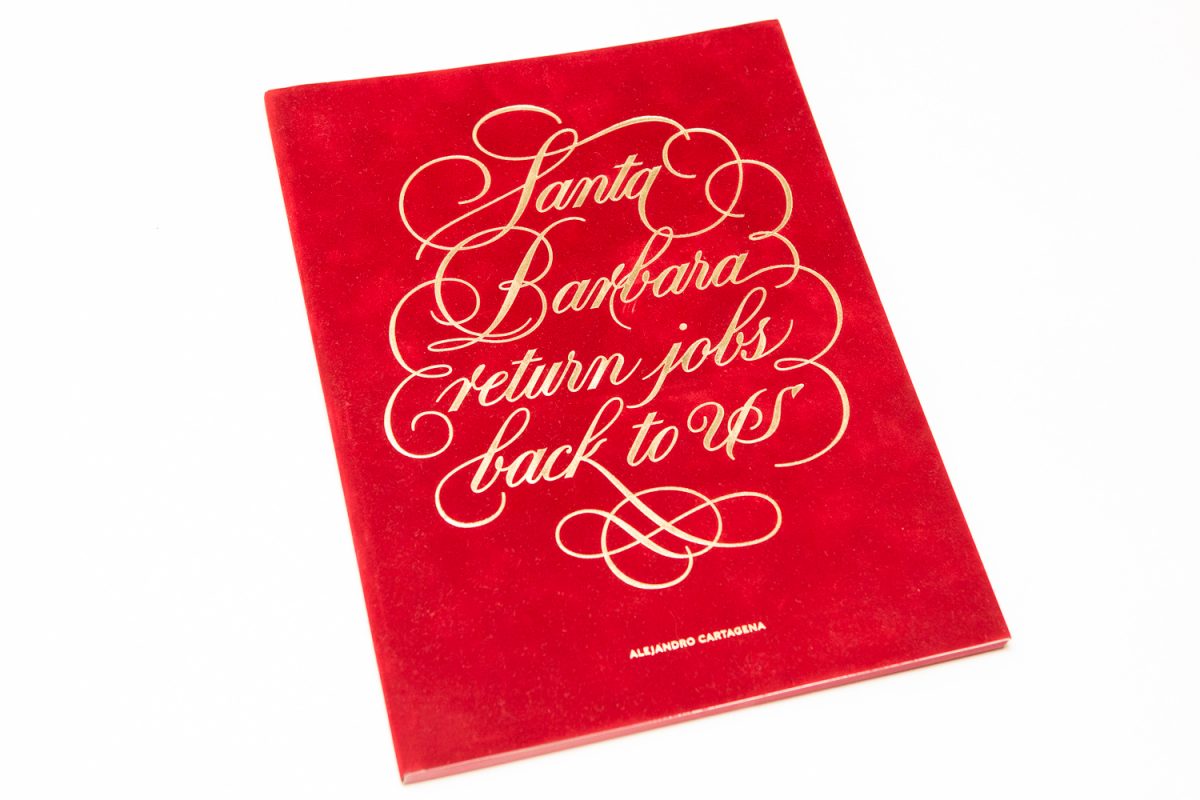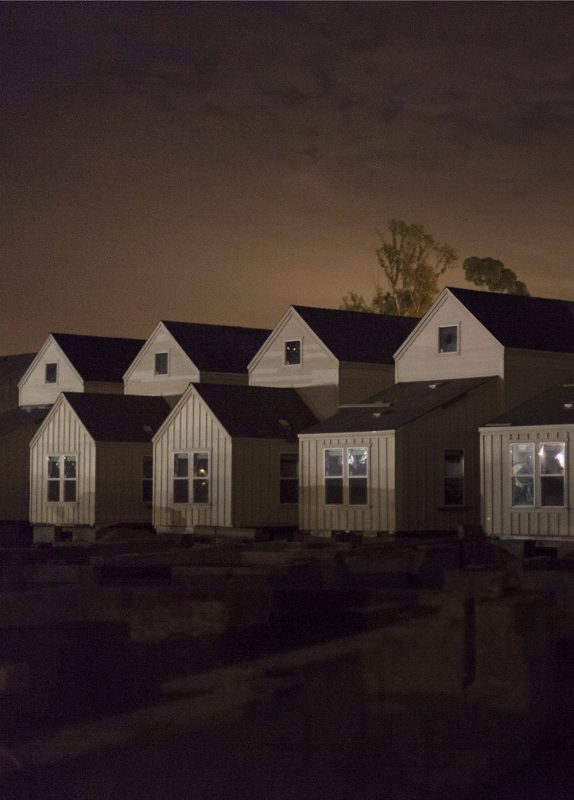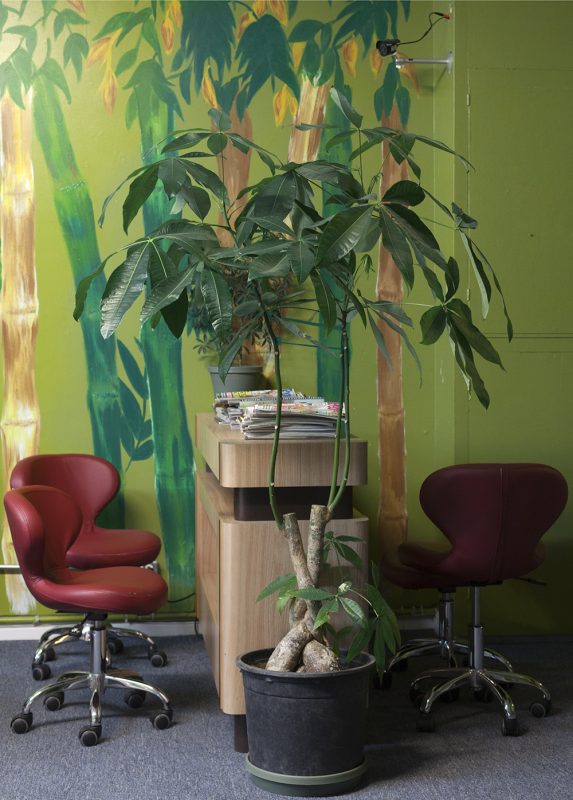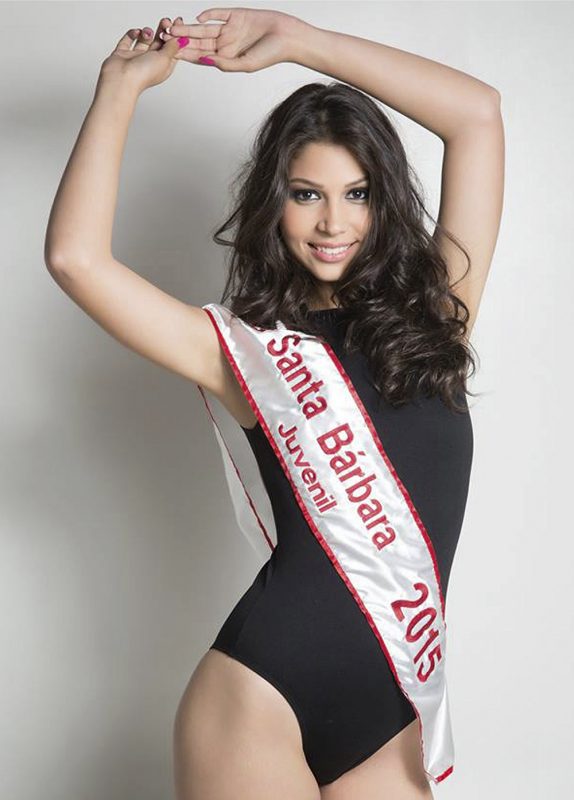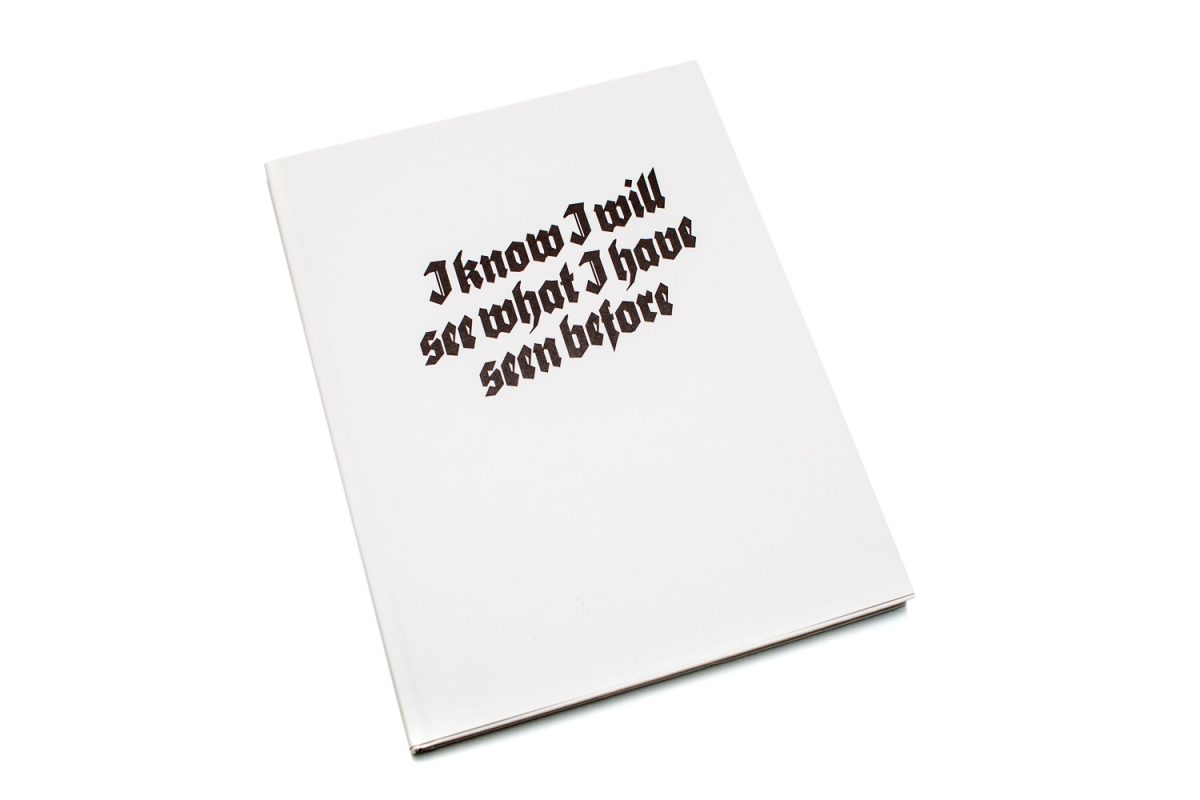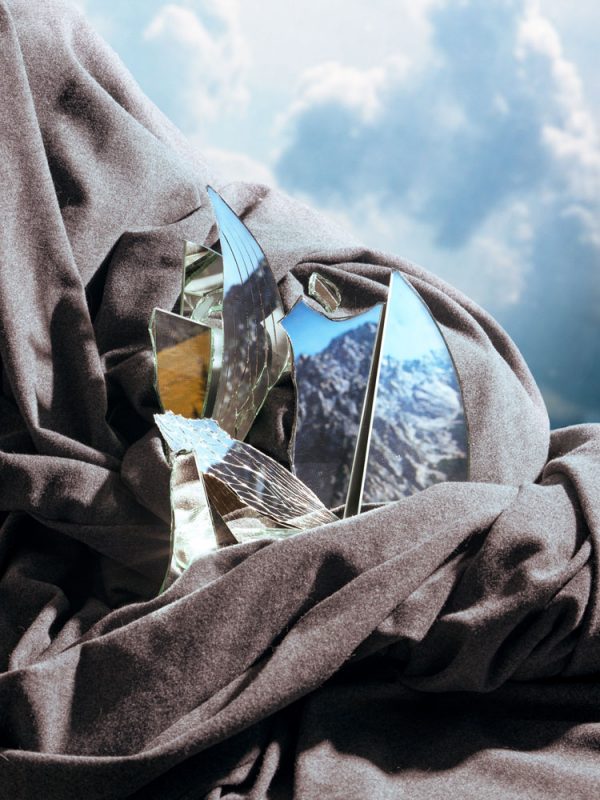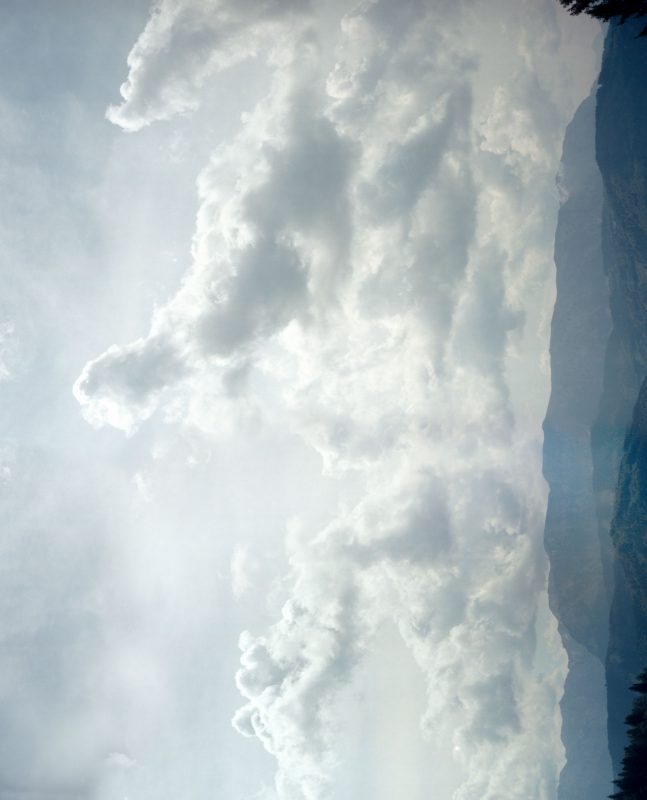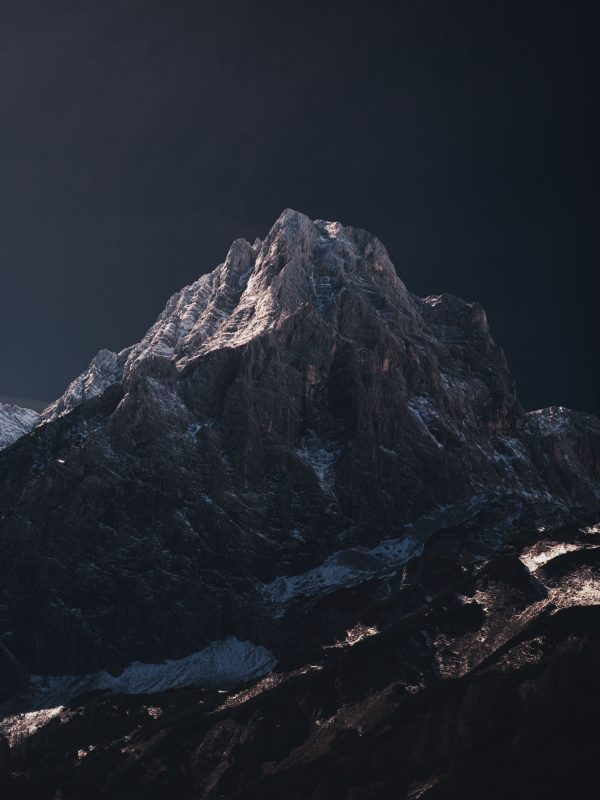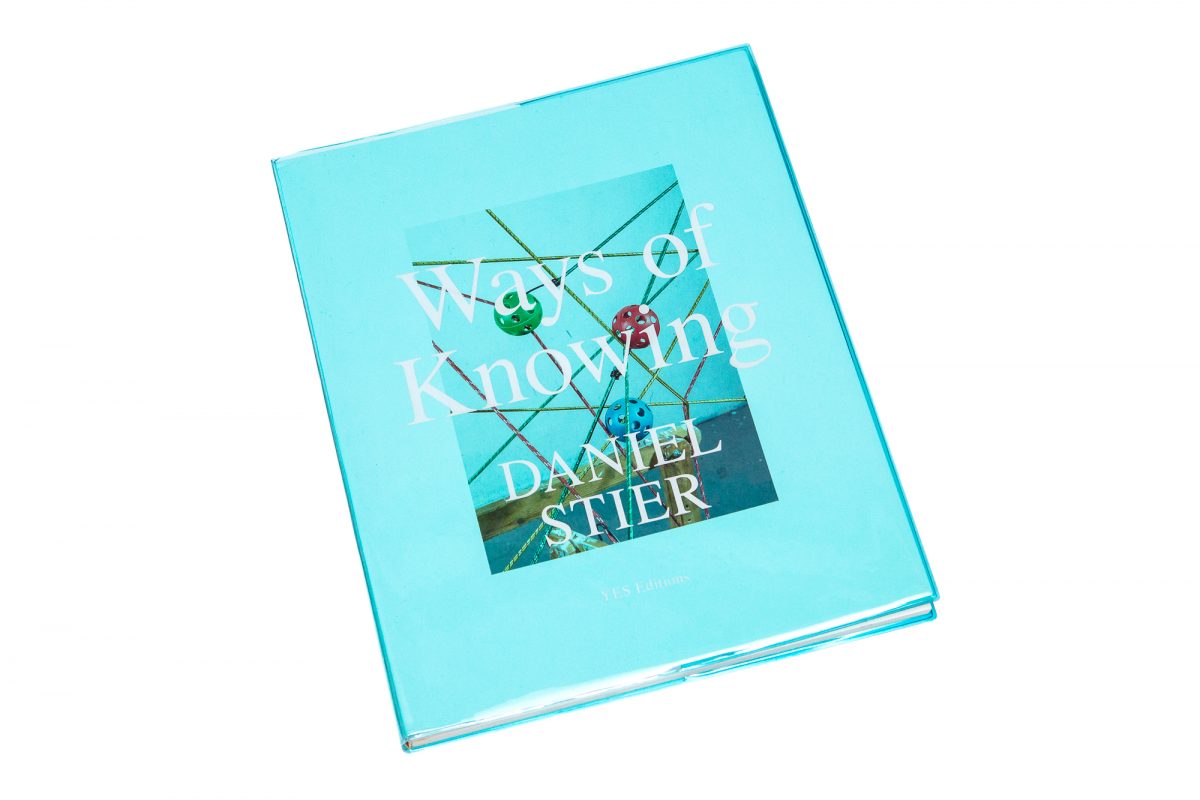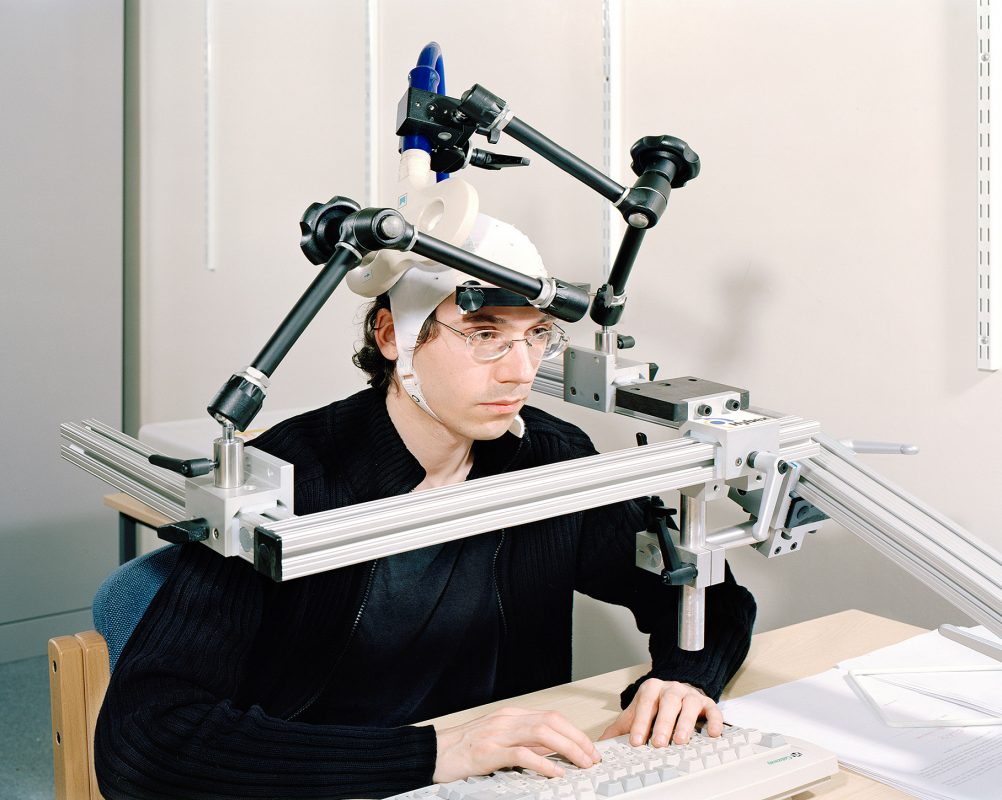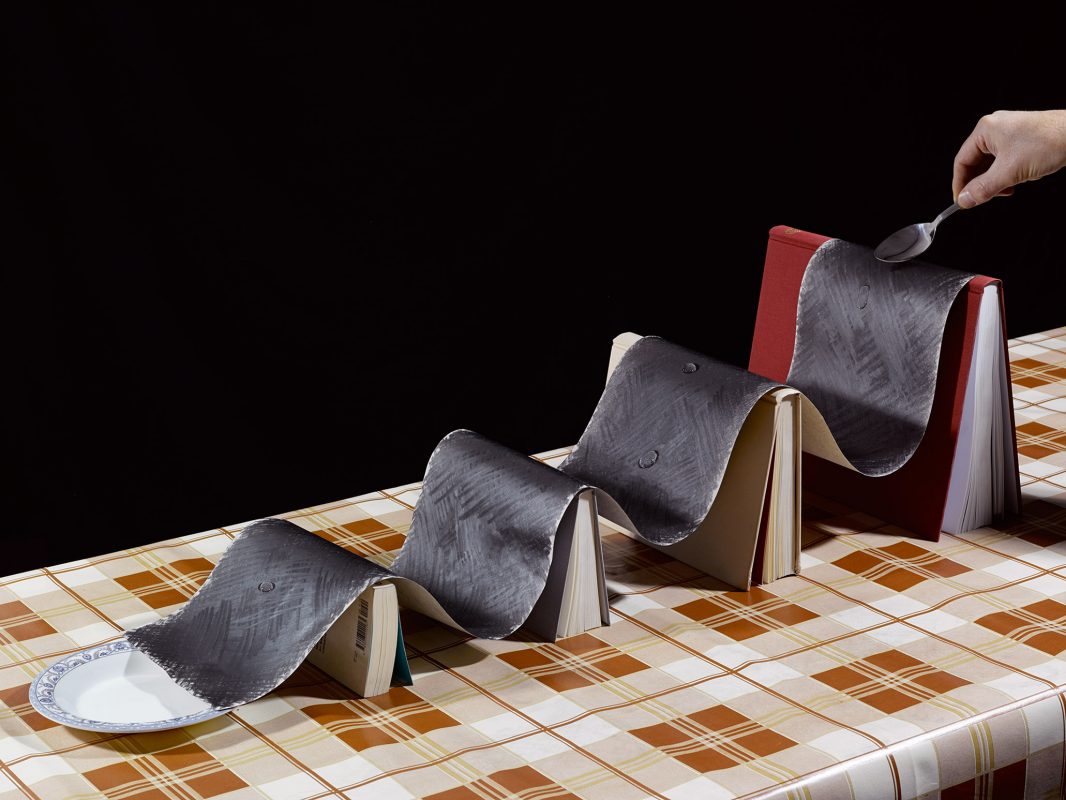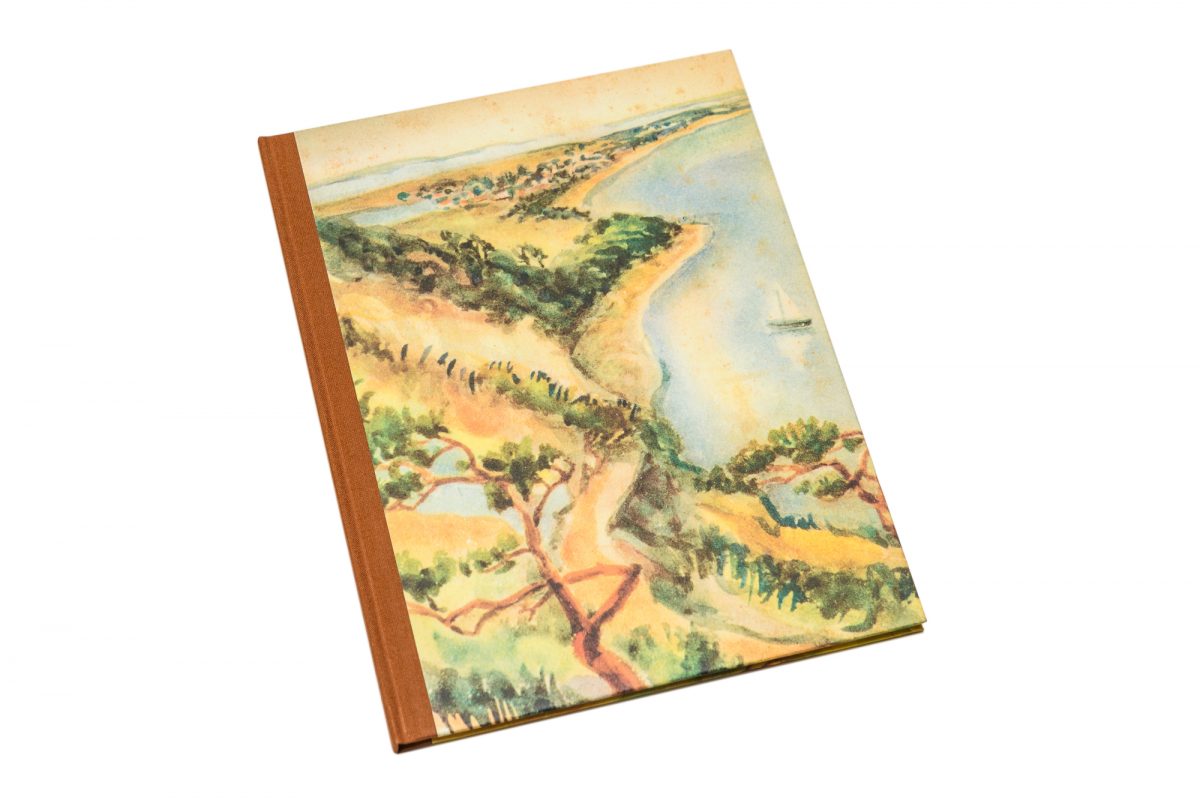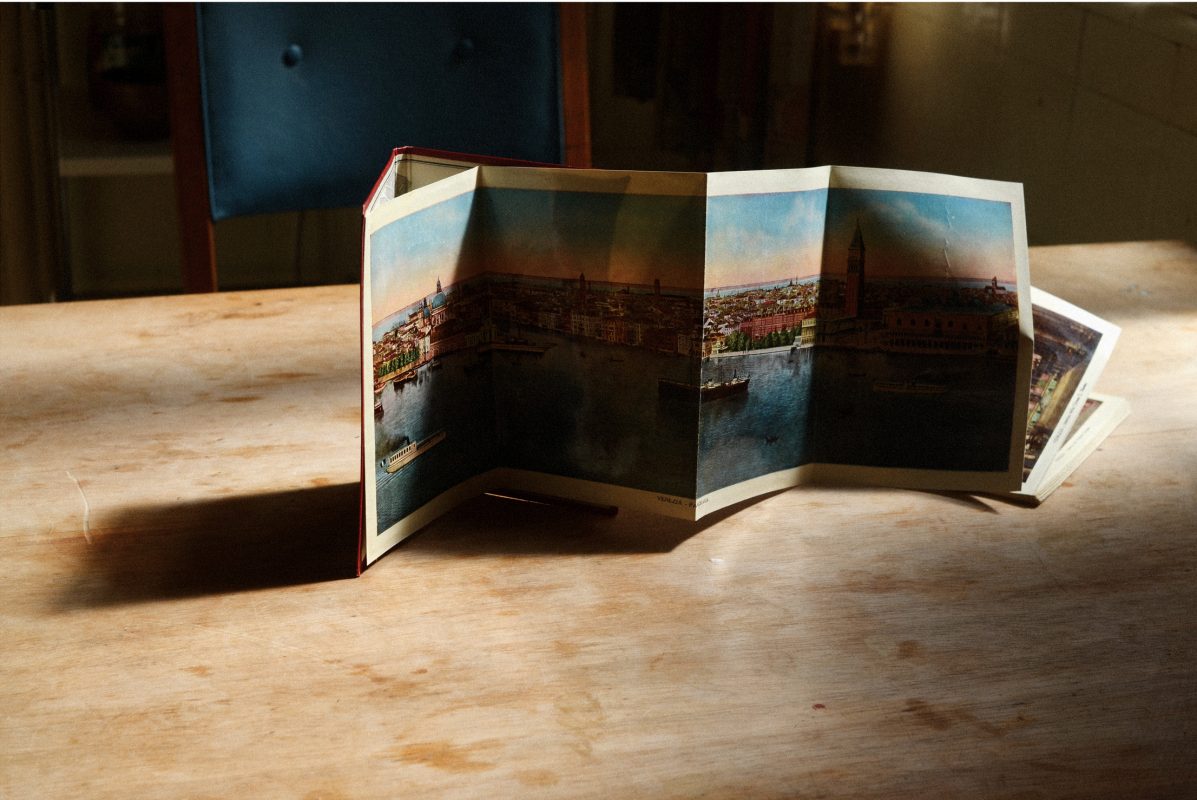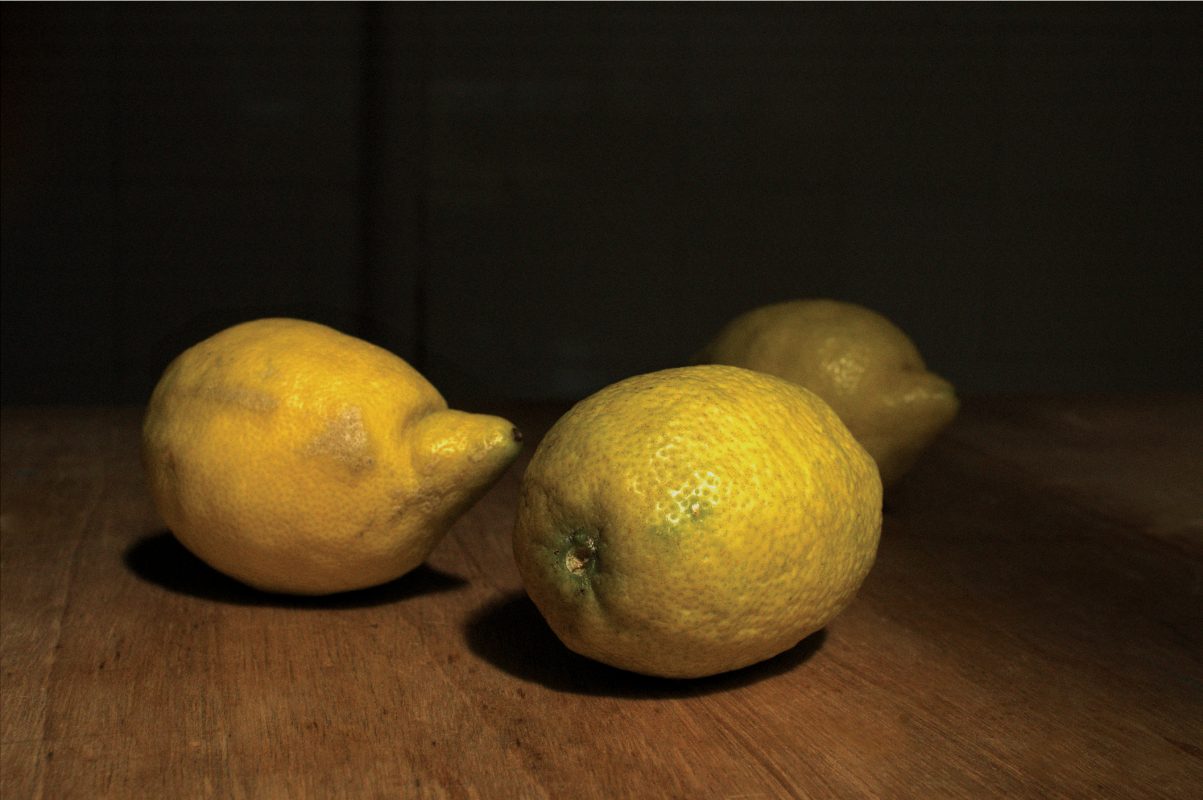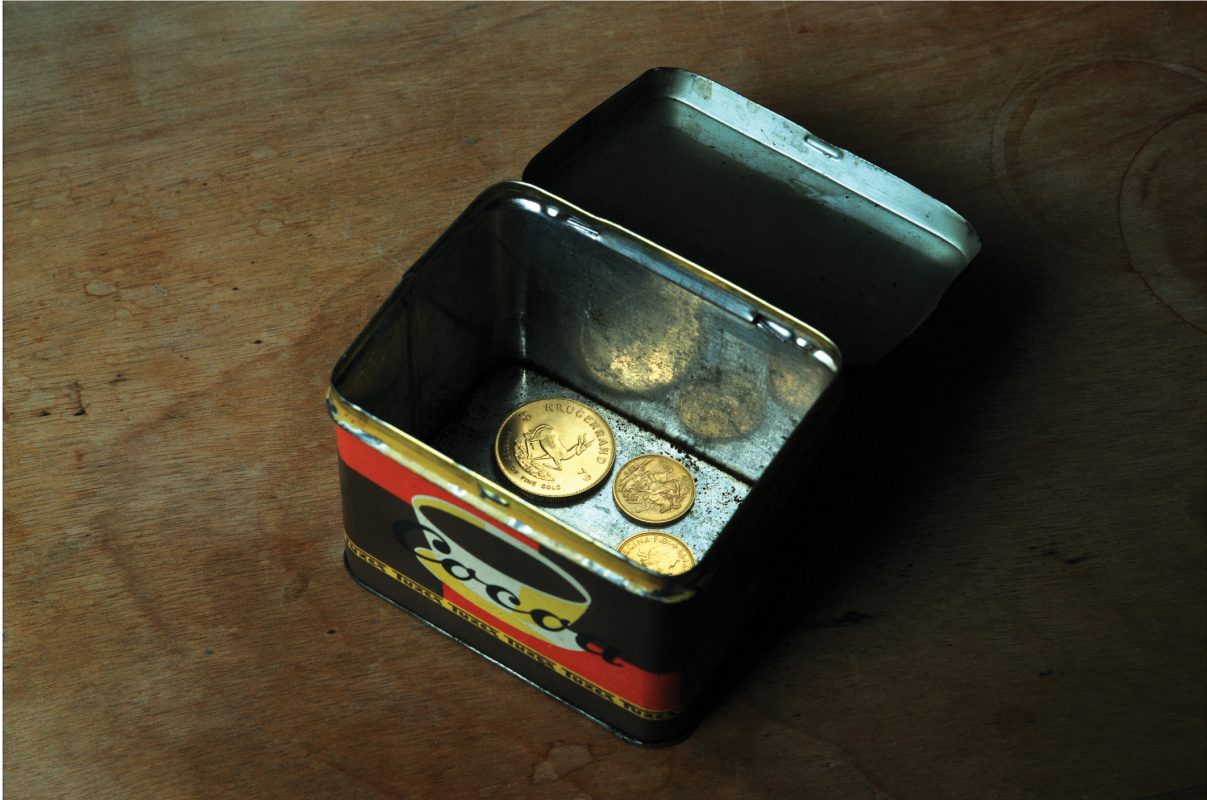Ben Burbridge
Senior Lecturer in Art History
University of Sussex, Brighton
For the latest instalment in our Interviews series Lewis Bush sits down with Senior Lecturer in Art History at University of Sussex, Ben Burbridge. Their conversation takes in aspects of the academic’s long-term collaborative project involving Ph: The Photography Research Network; a forthcoming book that deals with the ways in which photography is directly implicated in the political and economic machinations of neoliberalism, but with regards to the depiction of political and economic subjects within photographs, more in terms of the politics and economics of photography. They also share reflections on complex questions of ‘audience’ when writing; curatorial investigations into the parallels and mutual influences of scientific and artistic photography; and whether the fashionable term ‘conceptual documentary’ is actually at all useful.
Lewis Bush: When I was reviewing some of the previous interviews for 1000 Words I noticed that each one was subtitled with the interviewee’s usually rather precise area of work, for example ‘curator’, ‘artist’, or ‘publisher’. One of the reasons I was keen to have a dialogue with you is that I think neither of us seem particularly content to limit ourselves to one area of photographic practice or inquiry, instead spreading ourselves across several. You are an educator, a curator, a writer, a magazine editor at Photoworks, an academic, all activities I hope we can touch on individually as we talk. I thought it would be interesting to start though with the reasons for structuring your practice in that way and also on the practicalities of this quite distributed working. Is it sustainable? Or if you prefer to turn the question around, is this the only way to work in a field like photography where predictable work in any one of these areas seems to be increasingly rare?
Ben Burbridge: I’m lucky enough to have a permanent full-time academic post so some combination of most of those activities is fairly standard. But then I guess I was drawn to the job because I find that mix sustaining. Teaching, writing, editing, curating all hold different possibilities in terms of how ideas are generated and shared; they also offer different experiences – teaching is a more sociable activity than writing for instance. While the combination is not a matter of piecing together a living based on available freelance opportunities or temporary posts, that’s not to say economic imperatives don’t play a role in shaping the work I do – they’re just expressed in different ways. We know that universities today function as businesses in an increasingly free-market environment. The activities they support and the balance they strike between them reflect the likelihood of generating revenue, whether that’s through student fees, or research grants, or attracting private funding. Something similar is true of the research ‘outputs’ I’m meant to produce. As depressing as it may be, at some level, decisions to pursue an exhibition, or an article, or a book, or something else entirely are informed by the demands of future government audits. That relationship need not be straightforward however – the choice to pursue more contrarian pathways may provide one small way to assert a bit of agency in such a context. Aside from those institutional pressures, decisions to share ideas via one form or another are driven both by the opportunities available – sometimes chances find me – and by the particular demands of the questions I’m setting out to explore, above and beyond any need to move back and forth between different ways of working. I guess the ideas are paramount – some things are just better suited to one form than another, while others lend themselves to being explored across multiple fronts.
LB: I certainly get the sense of institutional pressure to perform in one way or another. What I’ve noticed is that some seem to rather succumb to these demands and go on to produce a succession of rather drab ‘outputs’ which meet the needs of the institution without seeming to fulfil much purpose beyond it. A smaller number of people find ways to keep the paymasters happy and produce something of wider interest. Perhaps with that in mind we could start by turning more directly to writing. I believe that you are currently finishing two books, could you briefly outline them?
BB: The first is a co-edited effort, which has grown out of a long-term collaborative project involving Ph: The Photography Research Network, a group of around thirty UK photography researchers who have been working together in various ways for close to ten years now. It started life in 2010 as eitherand.org, a National Media Museum project initiated by Charlotte Cotton when she was heading up Media Space. The original project consisted of a very substantial number of commissioned essays, conversations and slideshows produced by writers and practitioners from diverse disciplines, organised around a series of themes. Those themes marked an effort to identify what we saw to be some of the key discussions emerging around photographic culture at that time. I have been working with Annebella Pollen to go back over all of the material to make a necessarily smaller selection as the basis for a printed book that will be published by I B Tauris later this year. Rather than just produce a miniature version of the website, we saw this as a chance to try and plot new routes in, around and between the texts, and to identify some of the concerns that may not have been picked up as particularly important at the start of the project. The book is the product of a lot of people’s work, a lot of other people’s energy and commitment, and as a result it feels like something quite important now it’s reaching a conclusion of sorts. Collectively, I think we’ve made a good stab at identifying some important routes of travel for discussions around photography which, in my view at least, should always be anchored in something else, whether that’s the values we attach to the amateur or the mediation of political violence. That seems to be a very effective way to look beyond the sometimes-narrow concerns of the usual suspects, drawing new voices into the conversation.
LB: And how about the other book?
BB: The other book is an effort to draw together various things I’ve been thinking about during the past five years or so, in relation to the idea of photography and ‘communicative capitalism’, a concept I’ve borrowed from the political philosopher Jodi Dean. I didn’t set out to write a book initially – I just followed my interests as and when I got the chance to do some work and then, a year or so I go, I realised that maybe I was sitting on enough material to draw together as something like a book. It deals with the ways in which photography is directly implicated in the political and economic machinations of neoliberalism, not so much in terms of the depiction of political and economic subjects within photographs, more in terms of the politics and economics of photography. It’s an effort to critically address diverse corners of a recent photographic landscape in terms of labour, profit and power. I do this with reference to a wide range of contemporary art practices, which provide the lenses through which this landscape is brought into focus – both because photography’s political-economies seem to be an important emerging interest for some artists, but also because they prove a significant blind-spot for others when they look to photography’s uses in the larger culture. Fairly traditional approaches to appropriation, for instance, seem to be very poorly suited to addressing questions of how the photographic cultures they explore are monetised, or how those processes are implicated in the broader dynamics of free-market capitalism. The book also tries to position the field of contemporary art – and, indeed, my own work as an academic (which would include this interview, of course) – within, not outside the issues studied. In that sense, I’ve gained a lot from recent discussions of institutional critique, particularly from artist-writers like Hito Steyerl and Andrea Fraser. I think Fraser’s idea that economics should be central to what artworks mean not just socially but also artistically provides an interesting jumping-off point when it comes to writing about photography, art and politics today.
LB: I’d like to briefly pick up this idea of the way photography is implicated in neoliberalism, and capitalism more broadly. It’s a fascinating topic and one of significance for anyone who uses photography, almost regardless of how they position themselves, whether as artist, documentarian, professional or amateur. It seems to me that ‘serious’ photographers of most leanings have been aware for several decades at least of the extent to which the camera is inescapably meshed into a history and politics of seeing that complicates our use of it, in terms of the politics of representation for example. Relatively few seem to have applied the same thought to the way photography is part of a similarly problematic mesh of economics that one has to work within, whether one does so consciously or not. There seems to be an ever growing awareness in wider society about the way our lives exist within these diffuse meshes, most tangibly manifested perhaps in digital networks and the data we generate through their use, and an awareness also of how our lives are also shaped by these things. Do you think the moment is particularly ripe for photographers to engage more fully with these issues, as they have already engaged with issues around, say, representation?
BB: I’m not sure. Any growing awareness may be informed by a range of factors. The global economic meltdown must have played a role, although the effects were not necessarily felt immediately. In fact, a lot of the resistance that grew up in the wake of the financial crash, through things like Occupy, may have helped to fuel an earlier, optimistic discourse about Web 2.0 as a democratic arena in ways that actually obscured the question of how data is exploited. The Snowden revelations played an important role in creating a wider awareness of the tendencies you describe, which some academics and activists had been talking about for many years prior, of course. And, as you suggest, these insights have important implications for photography. This is where I’ve found Jodi Dean’s work to be very useful. She describes a society in which political participation has been reduced to a form of public communication that seeks recognition more than any sustained dialogue or institutional response. And, as you point out, that communication often takes place across platforms that allow data to be mined to service the interests of powerful elites. That was the starting point for me, really.
Across multiple fields, it seems that photography today is understood in terms of opportunities to communicate, but we don’t necessarily think about the larger interests that communication serves. An effort to do this would take us in any number of directions. We can think about our everyday photographic lives in relation to the consolidation of global corporate power, for instance, which would involve some reflection not only on things like internet surveillance, but also on the tax operations of the companies that most benefit from it and the ways that global structures allow traditional models of accountability to be evaded and confused. Or we can think about the situation historically – mass photographic practice was very much part of a Fordist economy, with cameras, film, developing services functioning as mass-produced commodities. Popular photography today, by contrast, is part of a post-Fordist world of targeted advertising fuelled by public self-fashioning. We can look at the hardware on which digital images are produced, shared and viewed, in ways that align our taking and sharing of photographs with the exploitation of slave labour in the Congo, suicidal factory workers in China, and the disposal of e-waste in Pakistan. Or we can think about scenarios that share structural characteristics with some of these tendencies, participatory photography projects used by NGOs, for example. These use unpaid volunteers from economically marginalised communities, particularly homeless people or impoverished villagers, to take photographs as part of projects ‘facilitated’ by middle-class westerners who do get paid, normally as freelancers. The organisations that provide those services talk about the realisation of a basic human right to be seen, while generally ignoring questions of institutional change or problematic links between their projects and the global development industry.
LB: So do you think awareness of these factors is growing?
BB: I suspect that, for the vast majority of people, the making, sharing, and consumption of photography are still experienced primarily – although perhaps not exclusively – in terms of communication, opportunity and abundance, even if that abundance is felt to be overwhelming at times. That’s as true for most artists, curators and writers as it is for anyone else. It’s certainly true for me. The imbalance in how we engage with photography is part of a wider tendency central to capitalist ideology in its current form, one that sees no limit to our personal freedoms or technological development, but that sees socio-economic relations as essentially unchangeable. So even if we were to believe that an awareness of these factors was growing, the really pressing question would be what do we do with that knowledge? How can we use it to change the current situation? Any answer would require us to look far beyond the field of photography – a realisation that I hope represents the optimistic flipside of an approach sensitive to the place of photographic culture within larger political and economic systems.
LB: Coming back around to writing, if we set aside institutional and perhaps also economic demands we mentioned before, a question which I often find I am asking myself is simply: why write about photography? It’s a huge amount of work and sometimes the tangible results are very far from what you might have hoped. When I was thinking of giving up blogging I stopped writing for three months to see if anyone noticed and no one did, which seemed to confirm my sense that it wasn’t worth the trouble. I felt that had I ended up falling into the same trap with writing that I often criticised photographers for making with photography, that is the expectation that it could in itself be a source of change. Anyway, despite this sense of the inability of writing in itself to lead to tangible effects, we persist with it. I have my own reasons but I am interested to hear yours. Why write? Who should we be speaking to? And to what end? What outlets for your writing do you see as useful and which are not?
BB: Why write? It’s one way to legitimate the very enjoyable – but in some ways, also very selfish – acts of reading, looking and thinking, both because it involves the production of something tangible and because it allows ideas to be more straightforwardly shared with others. Writing can help to focus those other activities in productive ways, and, for me at least, it’s an enjoyable craft.
LB: So, who do you write for?
BB: The question of audience is complex. I think about it in different ways at different times. Again, ideas are normally central. Most of the time, it seems that some people probably need to engage with certain ideas more than others do. The hope is normally to initiate or engage in a dialogue of some sort, although that’s not always easy to achieve when you write. That’s one of the reasons I enjoy teaching so much – in fact, most of the things I end up writing about have been discussed with students for months, sometimes years, ahead of me putting pen to paper. At the moment I have a bit of an aversion to writing for academic journals. This is linked to what I was saying earlier about research audits, but also to the likely readership, which someone told me was something like ten people for the average article. And they are mainly other academics. That’s not necessarily a problem, but it does mean there are ways in which the world of academic publishing resembles the echo chambers of blogging and social media, insofar as ideas will not necessarily travel beyond fairly limited groups of the likeminded. Most of the offers to write that I’ve taken up lately have appealed, in part, because they promised fairly substantial readerships of people whom I felt compelled to write for. I’ve written a chapter about shifts in contemporary art photography for a Photography Studies Handbook being published by Bloomsbury next year. This is set to become a staple on a lot of undergraduate reading lists and is aimed at students from diverse disciplines. Both those things appealed. Or I wrote an online essay about photography and exhibitionism for ICP in the summer, which drew on some of the stuff that’s going in the communicative capitalism book. That got read by a lot of people who I sense were familiar with the material – I was talking about the work of Nan Goldin and Richard Prince and Ryan McGinley, among other things – but may not have thought about it in quite the way I was suggesting they should. Again, I was happy about that.
A large audience is not the be-all-and-all though. I am increasingly interested in the notion of writing as something performative. This can, perhaps even should, extend to the eventual location a text is published. Particular contexts help to produce particular meanings – there’s no such thing as a neutral container – and that seems to be something worth thinking about. I just finished a short piece for the Science Museum’s e-journal, for instance. The invitation came because of my previous work with the organisation when it was still supporting Media Space. But I agreed because there were some odd ways in which my work there, and the ideas explored in the book and exhibition I had produced, intersected with the agenda that seemed to be driving decisions being taken by the Science Museum Group about the photography collection in Bradford. I thought those ideas could gain an interesting dimension if they were explored in the context of the organisation’s own journal.
LB: Photographers seem ever more conscious of the idea that different mediums necessarily invite different audiences, I’m not sure the same can be said for so many photography writers. This is probably a good moment to bring up Revelations the exhibition you curated for the Science Museum’s Media Space and the National Media Museum in 2015, and which charted the parallels and mutual influences of scientific and artistic photography from the medium’s earliest moments to the present. I felt it was the only exhibition I saw at Media Space that seemed to realise what seemed to be its purpose, or at least its potential in the British photography scene – that was I think to offer a rather more nuanced view of photography than the thinking artistic craft/unthinking scientific tool binary view which seems so common. Could you talk a little bit about the origins of the idea and the process of developing Revelations?
BB: Revelations was fed by a number of sources. Charlotte Cotton had suggested a show called ‘Give it Form’ as part of the original Media Space programme, which was going to explore ‘photography and the intangible’ across multiple fields, particularly art and science. Greg Hobson, who ended up as the exhibition’s co-curator, also contributed ideas to that early discussion. I was invited to join the exhibition team and to edit the accompanying book, which was published by MACK, because my work at that time was looking at relationships between contemporary art and uses of photography in nineteenth-century science. The show existed in numerous iterations. It was meant to be the opening exhibition at Media Space but, like the venue itself, it was subject to multiple delays and postponements. In one sense this was immensely frustrating. But it also presented opportunities, both because it meant we had more time to work on the show (in the end it was the product of about four years’ effort) and because each time it was postponed we could take stock and think again. It was because of this stop-start process that I found the time and space to argue for a historical show, one that went beyond the contemporary art/early science links, which I felt was necessary if we really wanted to open up the complex meanings of those early science images today. You wrote a very insightful take on the show, which picked up on that narrative – one about the hopes we pin to technology, and the ways they are shaped by wider socio-political forces. In the end, it was an exhibition about expectations forged in the cultural context of industrial modernity, how they have faded, and what all of that could mean in relation to the current moment.
LB: Yes. I remember being very impressed by the way that even within a tight overall curatorial concept Revelations avoided being too didactic and left plenty of room for visitors to discover their own ideas linked to the exhibition’s themes. Particularly interesting to me was the ambiguous relationship between photography and violence, and by that I don’t mean the overt, direct representations of violence we are familiar with from debates about, say, photojournalism. Rather I am thinking of the way that scientific photography like Edgerton’s is often produced for, or later becomes useful in the course of extremely violent acts. I think for example his Rapatronic cameras developed to photograph atom bomb tests, information later used to optimise the detonations of future weapons, in effect making them more lethal. I think one of photography’s very specific qualities is this capacity for the accidental capture of information and as a result for unintended readings, leading to it’s constant reuse and reinvention, turning from science to art, peace to violence, and back again. This makes it a fascinating medium, but it’s also ethically very difficult terrain, particularly as a producer of photographs where one needs, perhaps now more than ever, to consider not only one’s own intentions for an image but also a galaxy of unintended uses it might be put to. Are these issues you intended to draw attention to with Revelations?
BB: I hope that happened through the dialogues we established across and between the different photographs in the show, and between the groupings in different rooms. Contemporary artist Sarah Pickering produced her series Celestial Objects, a meditation on the relationship between the depiction of beauty and violence, with Edgerton’s work in mind; the same is true of Ori Gersht’s series Blow Up. In fact, Sarah and I appeared on the Today programme to promote the exhibition and she spoke about how dark she found Edgerton’s high-speed photograph of a bullet entering a lemon, which we had positioned opposite her work. What had originally circulated as a kind of popular photographic marvel had very disturbing undertones, with the skin of the lemon providing a kind of playful surrogate for human flesh – a view informed I think by all we know about the applications of some of Edgerton’s other work. Someone like Trevor Paglen, too, very knowingly draws on some of the techniques and aesthetics associated with earlier photographic innovation to engage directly with the question of how science has been instrumentalised by the military. We positioned Edgerton’s work next to that of Berenice Abbott in the show, which I think made for an interesting comparison. Both were based at MIT around the same time and, while the photographs they produced share some formal and technical characteristics, they were motivated by very different concerns. Both their projects only make sense in the context of wider Cold War politics and their links to the US military-industrial complex, but in notably different ways.
LB: Some of the contemporary works in Revelations would slot comfortably into the ever more frequently used category of ‘conceptual documentary’ a term generally used to suggest a hybrid of documentary and artistic practices. I think of Trevor Paglen’s Limit Telephotography series, for example, where Paglen uses extremely long lenses to photography into classified sites in the US. Although I am very interested in the possibilities of this mixing of two traditionally quite distinct genres of photography and glad to see it increasingly recognised as a practice in it’s own right rather than an outpost of art or documentary practice, I have some misgivings about the term, not least in the ease with which it relates conceptual art and art photography. Perhaps it’s apt in terms of Paglen’s work, where the work becomes very much about the performance and arguably the end result tells us little or nothing about the thing described, but I find it odd to hear the term ‘conceptual’ applied to work which is still in the end about producing beautiful, exhibition prints. That aside, I wonder how you feel about the usefulness of the term, and more broadly how you feel about the usefulness of the field of photography it attempts to describe?
BB: How useful is ‘conceptual documentary’ as a term? Well, I can’t say I use it much myself. But I have a pretty clear idea about what it is usually being used to describe, which I suppose means the term is useful, at least as a way of guiding the attention of art world types towards a specific mode of practice. I suspect it means less to people outside that context though.
LB: And what about ‘conceptual documentary’ work?
BB: How useful is it? Well, I guess it depends on what we want it to do and whom we want it to do it for. It usually involves a combination of two things – an effort to engage with the types of subject matter that have long concerned documentary photography, be that war or economic inequality or whatever; and then a self-reflexive engagement with the politics of representation attached to the photographing of those subjects, usually achieved by adopting strategies with some relation to the traditions of conceptual art. Each of those things, it seems to me, has the capacity to appeal to some people and to really piss off others. For years, unreconstructed documentary work seemed to really annoy people in the art world because they thought it lacked any critical engagement with the politics of its own making; whereas those the art world might see as ‘traditionalists’, and probably wider audiences more interested in photography as a window onto some other place, often seemed to find the self-reflexive stuff pretentious and distracting. I have some sympathy with both views, but, in the end, they may say more about the cultural experiences of different audiences and the ways they inform their expectations of photography than they do about the intrinsic virtues of either position or the quality of any particular series. The more sociological project of trying to understand why different groups may hold those views often seems off-limits when we have these types of discussion though, which I think is a shame.
I am personally very interested in the ideas raised and explored by the more accomplished examples of this work, but I also have questions about the particular politics at play. Much of what gets described as ‘conceptual documentary’ seems to fall victim to what queer theorist Eve Sedgwick calls ‘paranoid thinking’. It involves a fetishisation of knowledge about specific examples of how awful the world is, and also about the particular capacities and limits of photography in such a context, in ways that risk closing down the space to conceive of alternatives or engage in a more affirmative kind of politics. The close ties to – in fact, the clear dependency on – the field of contemporary art, both in terms of the approaches used and the contexts in which the work circulates, also raise difficult questions that are rarely if ever explored within the projects. Self-reflexivity often starts and ends with a politics of representation. In that sense, the work seems symptomatic of the disavowals that writers like Steyerl and Fraser see as the staple of so much of today’s political art.
LB: Yes. As touched on earlier in this discussion, there does often seem to be rather a gaping disconnect between the politics which seems to be intended to be broadcast by much photographic work (whether documentary, conceptual documentary, or art) and the economic systems that work seems to have been designed to exist and circulate in. The criticism of non-reflexivity that might once have been levied at documentary photographers is one that in a rather different way many artists seem to stand just as guilty of. As an example I’m fascinated by photographic editioning, a practice which seems to reflect the fact that however much the art world might have embraced photography as a medium, they haven’t embraced it fully on it’s own terms, for how it functions what it is and isn’t able to do. Go to an art fair and you’ll see photographers contorting themselves in all sorts of ways to meet the demands of a market, which has little interest in one of photography’s innate qualities, sometimes at the same time as speaking of photography’s wonderful economic democracy.
I think corporate sponsorship is another interesting example of this disconnect between words (or images) and deeds. There have been some highly successful campaigns against these corporate entanglements in the fine arts (the Liberate Tate movement for example) but there seems to be little similar will in photography. With the Deutsche Börse, Syngenta and Prix Pictet photography prizes all in full swing at the moment, I wonder what is your take is on corporate sponsorship, a necessary evil or not worth the trouble?
BB: One of the issues may be the uneven way in which we experience and talk about the transactions that a lot of corporate sponsorship involves. Zizek describes the way that the so-called ‘liberal communist ethics’ expounded by figures like Bill Gates perceive ‘the ruthless pursuit of profit’ to be ‘counteracted by charity’. We generally focus only on the second part of that relationship when we engage with these prizes and exhibitions – discussing the relative merits of different artists’ projects, even the political issues they address, but not the aggressive pursuit of monopolies or the facilitation of tax evasion associated with their sponsors. We all actively contribute to the appearance of social responsibility while ignoring the anti-social behaviour that funds it. Something like Liberate Tate did a very good job of exposing that gap. But then I’m not sure how helpful it is to only set our sights on corporate sponsorship. In many ways, it seems an entirely rational relationship for both parties to try and broker in the current political-economic context. Museums and galleries, like all public services, are chronically underfunded by the state at present. And even if corporate sponsorship ended tomorrow, the system that produced it would continue to stretch deep into the art world, whether through the people appointed to boards of trustees or the business-orientated models of evaluation imposed on publicly funded organisations. But the galleries and artists that benefit from the sponsorship at present would be worse off, at least in financial terms. The problem – if there is one, and a lot of people would say there isn’t, of course – is the larger system; all these other things are symptoms.
LB: True. There is obviously an issue that the more the symptoms of a problem are suppressed, counteracted, or otherwise made bearable, the more people might be content to live with the disease that is the cause rather than finding a cure. To end then, something of a big question but I hope you’ll regard it as an opportunity to be taken in any direction you like, whether technically, philosophically, artistically or something else entirely. From your work across all these different fields what sort of directions do you feel photography is currently heading in?
BB: Setting aside truisms regarding the need to think about ‘photographies’, plural, I imagine photography is heading in the same direction that we are, whatever that proves to be. I’ve just finished reading Nick Srnicek’s book Platform Capitalism, which provides an important context for understanding some of the areas of photographic culture we were discussing earlier. While it’s mainly focused on the current state and future fate of digital platforms, it touches on the likely futures we face in a much larger sense, building on arguments introduced in Inventing the Future, a really incredible book that Srnicek wrote with Alex Williams a couple of years ago. They suggest that, at present, we are heading towards a world of increasing corporate monopolies and further privatisation. Machines will continue to replace humans in the workplace, at the same time that populations continue to expand. This will produce an employment crisis that most of us will experience in terms of extraordinary levels of precarity, making the current existence of the typical photo-world freelancer look like some kind of wild party! Or else, governments, under pressure from citizens, will take action to address that trend, working together to address tax evasion, for example. The introduction of an Unconditional Basic Income could provide a very effective means to redistribute some of the vast corporate wealth that currently sits in offshore accounts, relieving populations of some of the obligation to find paid work in ways that would liberate people to pursue alternative, less-alienating activities. Photography could play important roles in both scenarios but, at the moment, I’m more curious to see if it might help us usher in one and avert the other. ♦
Image courtesy of Ben Burbridge. © Jason Evans

